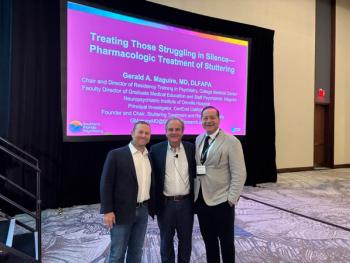
Is TMS Cost-Effective?
Researchers looked into the efficacy and value of TMS for treatment-resistant depression.
RESEARCH UPDATE
Repetitive transcranial magnetic stimulation (rTMS) is known to be a safe, noninvasive, treatment for major depressive disorder (MDD), but how does cost compare with that of pharmacotherapy?
Australian researchers
Considering that up to 40% of patients with MDD either do not respond to or tolerate pharmacotherapy and that up to 85% of patients who do respond can be expected to relapse within 15 years, exploration of methods that more economically sustain quality of life is worthwhile.
[[{"type":"media","view_mode":"media_crop","fid":"43173","attributes":{"alt":"transcranial magnetic stimulation","class":"media-image","id":"media_crop_2313771685809","media_crop_h":"0","media_crop_image_style":"-1","media_crop_instance":"4704","media_crop_rotate":"0","media_crop_scale_h":"0","media_crop_scale_w":"0","media_crop_w":"0","media_crop_x":"0","media_crop_y":"0","title":" ","typeof":"foaf:Image"}}]]©photopixel/Shutterstock.
Although several studies have compared the cost of rTMS with that of electroconvulsive therapy,
To further explore the issue, the
rTMS, which induces an electrical current in a localized region of the cerebral cortex, requires a patient to present 3 to 5 times per week for 4 to 6 weeks of treatment. Treatment sessions last about 40 minutes. No anesthesia or muscle relaxants are needed. Patients can resume normal activities immediately after a session, although common adverse events include mild-to-moderate posttreatment headache and mild pain or discomfort at the treatment site.
Although use comes with a warning of potential seizure induction, no seizures were reported during clinical trials, and the postmarketing incidence rate, at less 0.1% per patient, is lower than that seen with standard pharmacotherapy. This, in itself, may render rTMS a superior choice for patients with concerns about adverse effects of pharmacologic agents regardless of cost concerns.
The Markov model showed that QALYs gained were 1.25 with rTMS vs 1.18 with antidepressant therapy, and costs were somewhat lower for rTMS in AUD: $31,003 vs $31,190 ($22,124 vs $22,260). The willingness-to-pay threshold in Australia is AUD $50,000 per QALY gained. Given that threshold, the findings showed that the probability that rTMS was dominant (ie, provided better patient quality-of-life at lower cost) was 32%, and the probability that rTMS was cost-effective compared with antidepressant therapy was 41%.
The bottom line
Sensitivity analyses confirmed the superiority of rTMS in terms of value for money compared with antidepressant medications, with multivariate analysis showing that the probability of rTMS being either dominant or cost-effective compared with antidepressant therapy exceeded 70%. The findings confirmed those of the earlier study.2
References:
1. Nguyen KH, Gordon LG. Cost effectiveness of repetitive transcranial magnetic stimulation versus antidepressant therapy for treatment resistant depression. Value Health. 2015;18:597-604.
2. Simpson KN, Welch MJ, Kozel FA, et al. Cost-effectiveness of transcranial magnetic stimulation in the treatment of major depression: a health economics analysis. Adv Ther. 2009;26:346-368.
Newsletter
Receive trusted psychiatric news, expert analysis, and clinical insights — subscribe today to support your practice and your patients.













